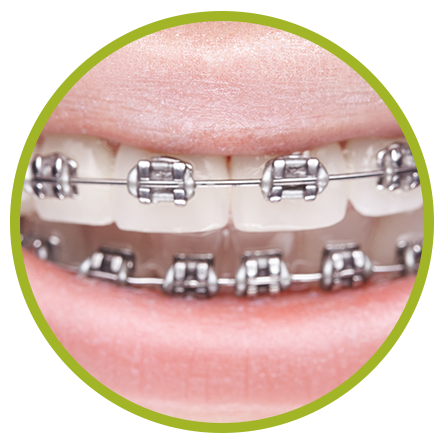Get a Smile That’s Worth a Thousand “Likes”
Most people who need orthodontic work will have braces at some point. Braces at Sycamore Orthodontics & Pediatric Dentistry are an excellent option for straightening your teeth and improving your oral health.
All About Braces
Braces work by using brackets and wires to slowly move teeth into their ideal positions. Brackets are bonded to the surface of teeth, while the wires are threaded through the brackets. These two things work together to guide your teeth into place.
During appointments, we will tighten and adjust the wires to allow for proper tooth movement. We also frequently use elastics to assist in the process. Braces today are a lot smaller and sleeker than they used to be, allowing them to be more comfortable. This also makes the adjustment period much easier.

Fixed vs. Removable
There are two main types of appliances that we use at Sycamore Orthodontics & Pediatric Dentistry to help straighten your teeth — fixed and removable. As implied by the name, fixed appliances stay in your mouth for the entire duration of treatment.
Removable appliances, such as Invisalign, are kept in your mouth for about 22 hours each day. These should only be removed when you eat, drink and brush your teeth.
Types of Braces

Metal Braces
Traditional metal braces are the most common type of braces. They are made of high-grade stainless steel and straighten your teeth using metal brackets and archwires.
You can elect to go for the standard silver metal look or choose different colored bands to match your personality.

Ceramic Braces
Ceramic braces are a newer, more esthetic option that is far less noticeable than metal braces. Instead of metal, these brackets are made of a ceramic material that blends in with the color of the teeth.
Many adults prefer this type of braces because it’s hard to notice that they’re there. They work the same as metal braces, however, ceramic brackets are more fragile and will need a little extra TLC.

Self-Ligating Braces
These braces are similar to traditional braces, with one notable exception: They don’t require elastics to move teeth into place.
Instead, the wire is placed into the “door” of each bracket, allowing for greater freedom of movement, making them more comfortable than other kinds of braces.